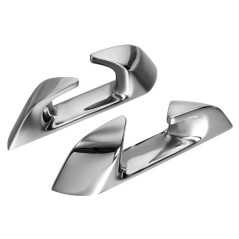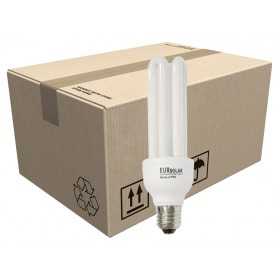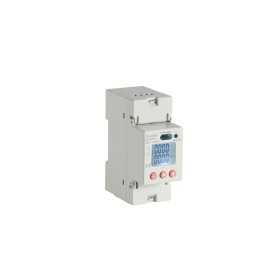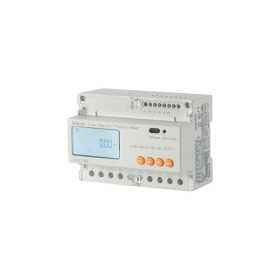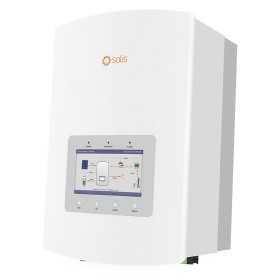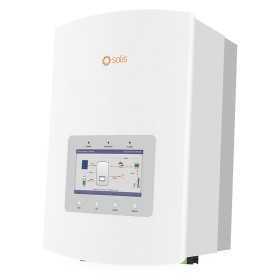On Grid Photovoltaic
Subcategories
Sigle Phase Photovoltaic ON-GRID Kit
ON-GRID Photovoltaic Kits or better known for grid connection.
Installing a photovoltaic system connected to the electricity grid is already convenient in itself because it allows you to use the energy generated by the photovoltaic panels "live" which means the energy consumed by the home is directly taken from that generated by the photovoltaic system.
3 Phase Photovoltaic ON-GRID Kit
3 Phase Photovoltaic ON-GRID Kit
Inverter for Storage sigle Phase
The inverters for connection to the grid with storage are special inverters that allow you to connect the photovoltaic system to the electricity grid and at the same time manage the energy generated by the system to power the house and charge the batteries connected to it. Thanks to this type of inverter it will always be possible to use the renewable energies available and access the paid ones only when the first are not available.
Inverter for storage three-phase
Inverter for three-phase storage. The inverters for connection to the grid with Storage are special inverters that allow you to connect the photovoltaic system to the electricity grid and at the same time manage the energy generated by the system to power the home and charge the batteries connected to it. Thanks to this type of inverter it will be possible to always use the available renewable energies and access paid ones only when the former are not available.
The technical specifications include a wide range of input and output voltages, as well as compatibility with batteries of different voltages. The inverter can protect against any problems, including short circuit, over voltage and over current. The product complies with a number of network connection and security standards.
Single-phase string inverter
The inverters for single-phase grid connection are the most common ones that are used in homes with power plants generally ranging from 3 kw to 6 kw. Consent to connect the system to the electricity grid by synchronizing with it. The inverter is the heart of a photovoltaic system because it is that device capable of transforming the current generated by the PV system and making it usable for common use. These inverters are used to connect photovoltaic systems to the grid and take advantage of on-site exchange, where the energy generated can be used directly at no cost and the excess is fed into the grid.
It involves writing in the form of a type of continuous electrical energy to be printed directly into the electrical grid. These machines extend the basic function of an inverter or with extremely soft and avant-garde functions, through the use of particular software and hardware control systems that help extract the maximum power available from the solar panels in any weather condition.
This takes the name of MPPT, an acronym of English origin which stands for Maximum Power Point Tracker. In fact, photovoltaic modules have a V / I characteristic curve such that there is an optimal working point, called Maximum Power Point, where it is possible to extract the maximum available power.
This point of the characteristic varies continuously as a function of the level of solar radiation hitting the surface, the temperature of the cell and others derived from ideal conditions. It is evident that an inverter able to remain "hooked" at this point (which is by its nature in motion) will always obtain the maximum available power in any condition. There are several techniques for implementing the MPPT function, which differ in dynamic performance (settling time) and accuracy. the accuracy of the MPPT is extremely important, the settling time is, in some cases, even more so. While all inverter manufacturers are able to achieve great accuracy on the MPPT (typically between 99-99.6% of the maximum available), only a few are able to combine precision and speed.
It is in fact in the variable cloudiness that it is powerful. It is very common to detect changes from 100 W / m² to 1000–1200 W / m² in less than 2 seconds. In these conditions, which are very frequent, an inverter with settling times of less than 5 seconds can produce up to 5% -10% more energy than a slow one.
Some photovoltaic inverters are equipped with modular power stages, and some are even equipped with an MPPT for each power stage. In this way manufacturers leave the freedom to configure an independent master / slave or MPPT to system engineering. The use of independent MPPT provides an objective advantage in uneven irradiation conditions of the panels. In fact, it is not uncommon for the surface of the solar panels to be diffused to the sun in a different way over the whole field. This is because it is arranged on two different pitches of the roof, because the modules are not distributed on strings of equal length or because of partial shading of the modules themselves. In this case, the use of a single MPPT would lead the inverter to work all the panels outside the maximum possible power point, while dividing the system into several steps each would work on its MPPT and consequently the energy production would be maximized. Another important feature of a photovoltaic inverter is the network interface. This function, generally integrated in the machine, must meet the requirements imposed by the regulations of the various electricity supply bodies.
In Italy, the CEI has released the CEI 0-21 standard, currently in edition 2. This legislation provides for a series of safety measures to prevent the introduction of energy into the electricity grid if its parameters are out of bounds. of acceptability.
If the electricity is supplied by the utility company, the latest models of photovoltaic inverters (even if the panels feed the energy into the system in the direction of the utility to prevent sending) around on the electrical system that is switched off a voltage without the installer or maintenance technician or technicians of the utility company knowing of the existence of a photovoltaic system that may be producing energy.
Three-Phase string Inverter
The inverters for three-phase grid connection are used in large homes with photovoltaic systems with powers that generally range from 3 kw above 6 kw or in small and large companies. They allow you to connect the system to the electricity grid by synchronizing with it. The inverter is the heart of a photovoltaic system because it is that device capable of transforming the current generated by the PV system and making it usable for common use. These inverters are used to connect photovoltaic systems to the grid and take advantage of on-site exchange, where the energy generated can be used directly at no cost and the excess is fed into the grid.
The RENAC Pro series inverters are specially designed for residential projects and small commercial projects. With its compact design, the inverter is lightweight and easy to install. The maximum efficiency is 98.5%. With advanced ventilation system designed, the inverter is able to dissipate heat efficiently. With 50% DC input oversizing capability, users could have more power in low irradiation conditions by adding additional panels.
There are 54 products.




